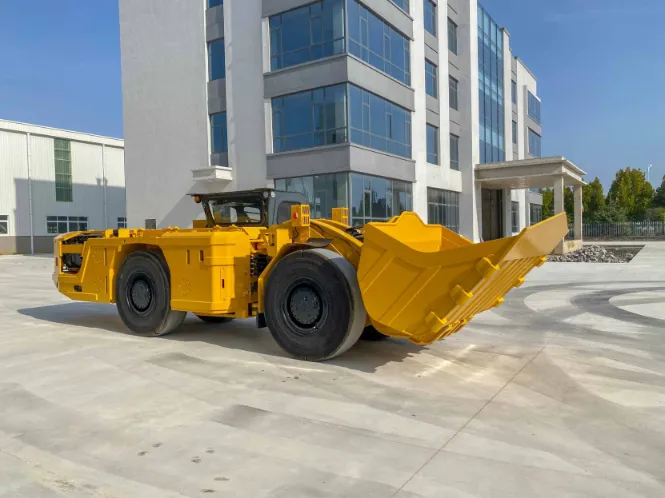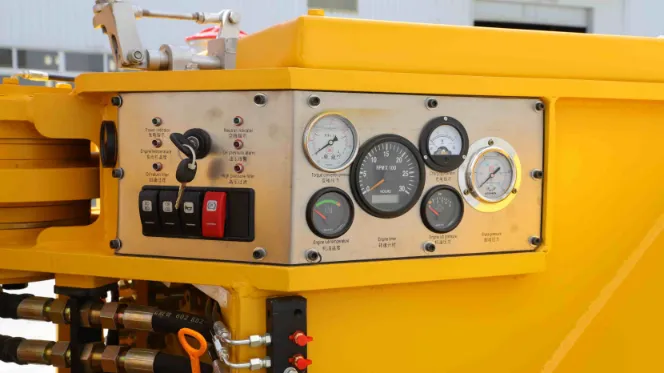How LHDs Can Help Mining Operations Meet Strict Environmental Regulations

Introduction: The Growing Importance of Environmental Regulations in Mining
Mining is a tough job, digging up minerals to power industries. But now, rules on the environment are getting stricter. Companies face big pressure to operate cleaner. Failing to follow these rules can lead to huge fines or even shutdowns. Load Haul Dump (LHD) machines, key players in underground mining, are helping mines go green. This piece explores how LHDs cut pollution, improve air, and use real world examples to show their impact.
The Impact of Stricter Environmental Laws on the Mining Industry
Years ago, mining companies had more freedom. Now, laws focus on everything from carbon output to water damage. Underground mining, like digging for gold or copper, has its own issues. Following these rules is a must. It keeps mines out of trouble and helps them stay competitive in a world that cares about the planet.
Why Mining Companies Must Adapt to New Standards
Adapting isn’ t a choice, it’ s a necessity. Tougher laws come from public worry about climate change. Mines that don’ t follow risk losing permits or trust. Investors also prefer companies that care about the environment. LHDs, built for moving ore in tight spaces, help mines meet these demands. They’ ve gone from diesel beasts to electric and automated systems. This shift keeps mines both profitable and earth friendly.
The Role of LHDs in Sustainable Mining Operations
What is LHD Equipment and How Does it Operate?
LHDs are sturdy machines for underground work. They scoop ore, carry it through tunnels, and drop it off for processing. They’ re the heart of underground haulage. These machines come in all sizes, small ones (15-30 tons) for tight mines, bigger ones (40-80+ tons) for large jobs. They handle narrow paths and steep slopes with ease. Newer LHDs are smarter, with electric power and automation making them even better.
Key Environmental Benefits of LHD Technology
LHDs do more than move rocks. They help mines shrink their eco footprint. Electric LHDs, for example, give off no emissions. That’ s huge in underground mines where air flow is tricky. They also make less heat, cutting ventilation costs. Automated LHDs, with their fancy sensors, use fuel wisely and cut waste. These perks make LHDs a smart pick for mines aiming to follow tough rules while staying efficient.
How Electric LHDs Contribute to a Cleaner Mining Environment
Reducing Greenhouse Gas Emissions with Electric LHDs
Electric LHDs are a big deal. Diesel machines pump out carbon and need pricey ventilation. Electric ones? Zero carbon emissions. Electric LHDs help mines hit net zero goals. They’ re a solid choice for deep mines where clean air matters most.
The Benefits of Zero Emission LHDs in Underground Operations
Zero emission LHDs don’ t just cut carbon. They make work safer by reducing toxic fumes. Cleaner air means less need for heavy ventilation, saving energy and cash. Sure, setting up charging stations can be a pain, and batteries don’ t last forever. But for mines chasing strict air quality rules, it’ s worth the hassle.
How Electric LHDs Help Meet Emission Reduction Targets
Emission targets are serious business. Governments are cracking down, and mines need to show results. Electric LHDs make it easier by cutting emissions at the source. Swap diesel for electric, and a mine can show real CO2 drops. That frees up money for other green efforts. It’ s a practical way to stay productive and compliant.
LHDs and Waste Management: Minimizing Environmental Footprints
Efficient Waste Transport and Disposal with LHD Equipment
Mining makes tons of waste. LHDs handle it well, moving debris and overburden fast. In methods like high wall subsurface mining LHDs clear excess material from coal seams. This keeps things neat. Less waste piling up underground lowers risks like acid mine drainage.
How LHDs Support Sustainable Material Handling Practices
Being sustainable isn’ t just about emissions. It’ s about using resources smartly. LHDs help by targeting high grade ore precisely. This cuts down on extra digging, which means less waste that could harm water or land. It’ s a small step, but it helps mines follow waste management rules.

Noise and Dust Control: How LHDs Enhance Mine Air Quality
The Role of LHDs in Reducing Noise Pollution in Underground Mines
Underground mines are noisy places. Diesel LHDs rumble loudly, bothering workers and nearby towns. Electric LHDs run quieter, cutting noise pollution a bunch. This matters for mines near homes, where noise rules are tight. Quieter machines also make work less stressful. Mining’ s still tough, no doubt, but it’ s a bit easier on the ears.
Dust Suppression Mechanisms in Modern LHDs
Dust is a big problem underground. It hurts lungs and pollutes air, causing issues like silicosis. Modern LHDs have dust control, like water sprays or sealed cabs. These keep dust down, improving air for workers. Better air also means less work for ventilation systems, which saves money and helps meet air quality rules.
Ensuring Better Air Quality for Workers and Minimizing Environmental Impact
Good air quality isn’ t just about rules, it’ s about people. Miners face enough dangers without breathing dust and fumes. LHDs with dust control and electric power create healthier workplaces. They also reduce the mine’ s impact on the environment. This double win helps mines follow laws that care about both workers and nature.
Automation and Monitoring: Real Time Data for Environmental Compliance
How Smart Sensors and IoT Integration Help LHDs Meet Regulations
Smart tech is changing mining. LHDs with sensors and IoT track stuff like fuel use and emissions on the spot. This info helps mines avoid breaking rules. For instance, sensors can spot when an LHD isn’ t running efficiently, wasting energy or polluting too much. It’ s like having a watchdog keeping things in check.
Remote Monitoring for Real Time Performance and Compliance
Remote monitoring goes further. Operators can watch LHDs from a control room, tweaking them to run greener. This cuts downtime and keeps machines eco friendly. Remote systems also help prove compliance with data for reports. It’ s a big step up from old school manual checks, saving mines from hefty fines.
Tracking and Reporting Environmental Data from LHD Operations
Data rules in today’ s mining. LHDs with monitoring systems create reports on emissions, energy, and waste. This openness is key for showing regulators you’ re following rules. Mines can prove how much they’ ve cut emissions or improved waste handling, thanks to electric and automated LHDs. It’ s not just about compliance, it’ s about earning trust.
Conclusion: The Future of LHDs in Promoting Eco Friendly Mining Practices
Why LHDs Are Key to Long Term Compliance with Environmental Regulations
LHDs aren’ t just machines, they’ re tools for a greener future. They cut emissions, reduce waste, and improve air quality. As rules get stricter, LHDs will be vital for keeping mines compliant and profitable. Companies investing in electric and automated LHDs now will stay ahead.
The Growing Role of Technology in Creating Sustainable Mining Operations
Tech is changing mining, and LHDs are leading the way. From electric power to smart sensors, they help mines balance profit with planet care. Subsurface mining still has risks, like land sinking or water pollution. But LHDs are paving the way for cleaner operations. Mines that adopt this tech will not only meet rules but set the bar for sustainability.
FAQ
Q: What makes electric LHDs better than diesel ones for the environment?
Electric LHDs produce no carbon emissions and need less ventilation than diesel models, which pollute and cost more to manage.
Q: Are electric LHDs practical for all underground mines?
Not always. They need charging stations, and batteries can limit range. Smaller mines or short hauls work best, while big mines might need hybrids.
Q: How do LHDs help with waste management?
LHDs move waste and overburden efficiently, reducing risks like acid mine drainage or land sinking.
Q: Can automated LHDs really improve compliance?
Yes. Sensors and IoT track emissions and performance live, helping mines stay within rules and create reports.
Q: Are LHDs expensive to upgrade for environmental compliance?
Electric or automated LHDs cost more upfront. But savings on fuel, ventilation, and fines make them worth it over time.
About Us
Qixia Dali Mining Machinery Co., Ltd was established in 1998, located in Yantai City.
The company is mainly engaged in the design, development, production, installation and training of underground mine equipment and ore processing equipment, spare parts supply and sales.
MoreContact Us
- Xinbang Rd, Private Economy Park, Qixia, Shandong Province, China
- +86 135 5307 3459
- ytdali@ytdali.com
 +86 13553073459
+86 13553073459
+86 13553073459
+86 13553073459








